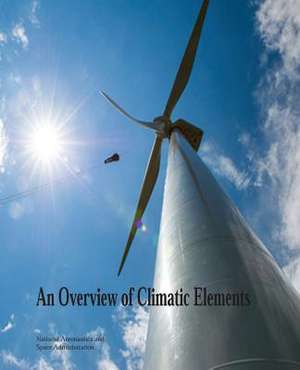An Overview of Climatic Elements
Autor National Aeronautics and Administrationen Limba Engleză Paperback
Preț: 272.49 lei
Nou
Puncte Express: 409
Preț estimativ în valută:
52.14€ • 54.44$ • 43.15£
52.14€ • 54.44$ • 43.15£
Carte disponibilă
Livrare economică 15-29 martie
Preluare comenzi: 021 569.72.76
Specificații
ISBN-13: 9781503259607
ISBN-10: 1503259609
Pagini: 546
Dimensiuni: 191 x 235 x 28 mm
Greutate: 0.93 kg
Editura: CREATESPACE
ISBN-10: 1503259609
Pagini: 546
Dimensiuni: 191 x 235 x 28 mm
Greutate: 0.93 kg
Editura: CREATESPACE
